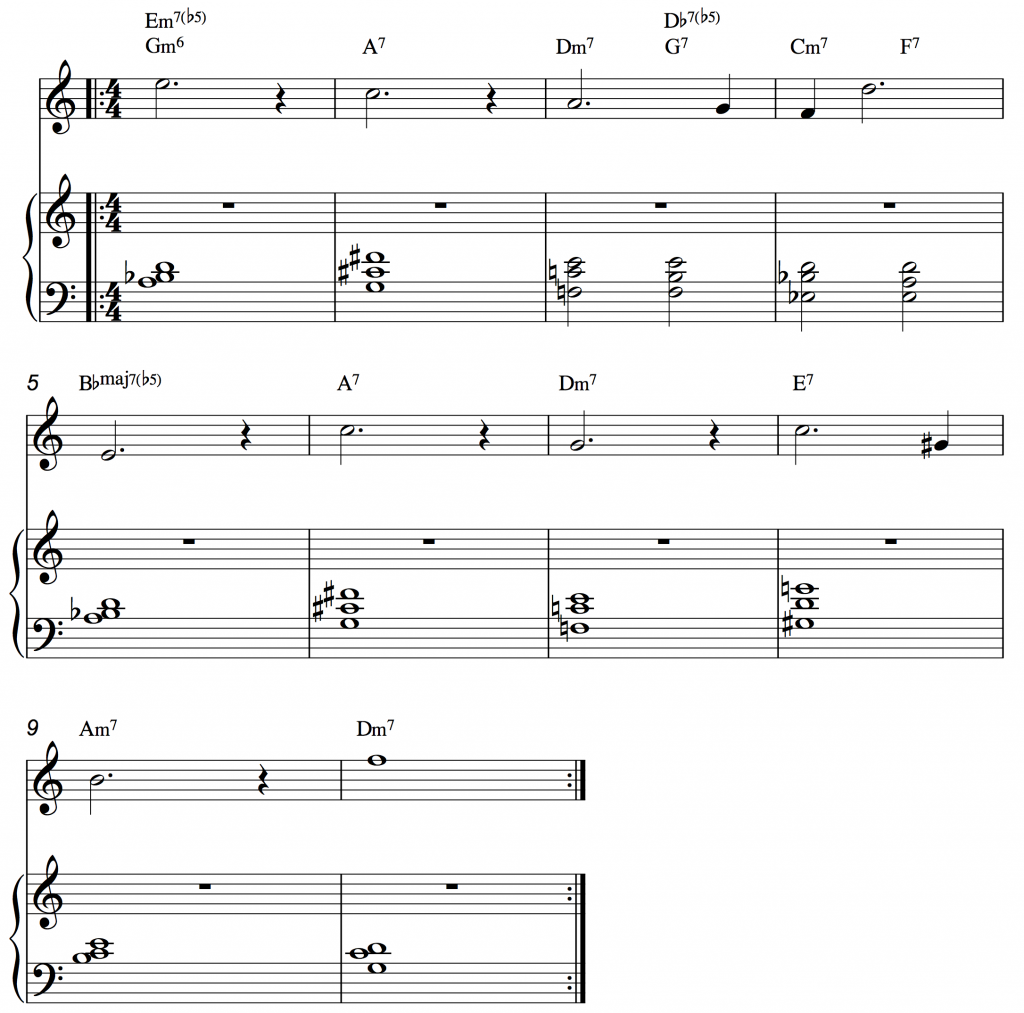Finding the sweet notes
In video lesson 24 of Learn Jazz Piano I focus on how songwriters employ ‘sweet notes’ to add that spine tingling effect to their melody. I then relate this to jazz improvisation and show you how to employ this technique of finding the sweet notes in your solos. Using these well-chosen notes is a good way to anchor your solo, reflect the original song and help the listener follow your improvisation.
Here’s an extract from chapter 10 of my eBook ‘How To Solo’, where I deal with this essential topic of finding the sweet notes. To purchase the book follow this link.
Chapter 10
Here are two tunes that target sweet notes to great effect.
In the first eight bars of Victor Young’s Beautiful Love each sweet note occurs on beat 1 and above the chord.
The table below describes the function of each boxed note in relation to its chord.
| Note | Chord | Function |
| A | Em7(b5) | 4 |
| F | A7(#5) | #5 |
| F | Dm7 | 3 |
| C | Gm7 | 4 |
| A | C7 | 6 |
| A | Fmaj7 | 3 |
Blue In Green, credited to Miles Davis but probably composed by Bill Evans, has a cyclical structure that never seems to resolve. I recommend that you first revisit this tune by listening to track 3 of the Miles Davis album: Kind Of Blue.
In the following example, rather than writing out the complete melody, I’ve illustrated just the target notes, plus a suggested left-hand accompaniment. Note that these left hand voicings are rootless.
- Table showing sweet notes
| Bar | Note | Chord | Function |
| 1 | E | Gm6 | 6 |
| 2 | C | A7 | #9 |
| 3 | A | Dm7 | 5 |
| 3 | G | G7 | 1 |
| 4 | F | Cm7 | 4 |
| 4 | D | F7 | 6 |
| 5 | E | Bbmaj7(b5) | b5 |
| 6 | C | A7 | #9 |
| 7 | G | Dm7 | 4 |
| 8 | C | E7 | #5 |
| 9 | B | Am7 | 9 |
| 10 | F | Dm7 | 3 |

